
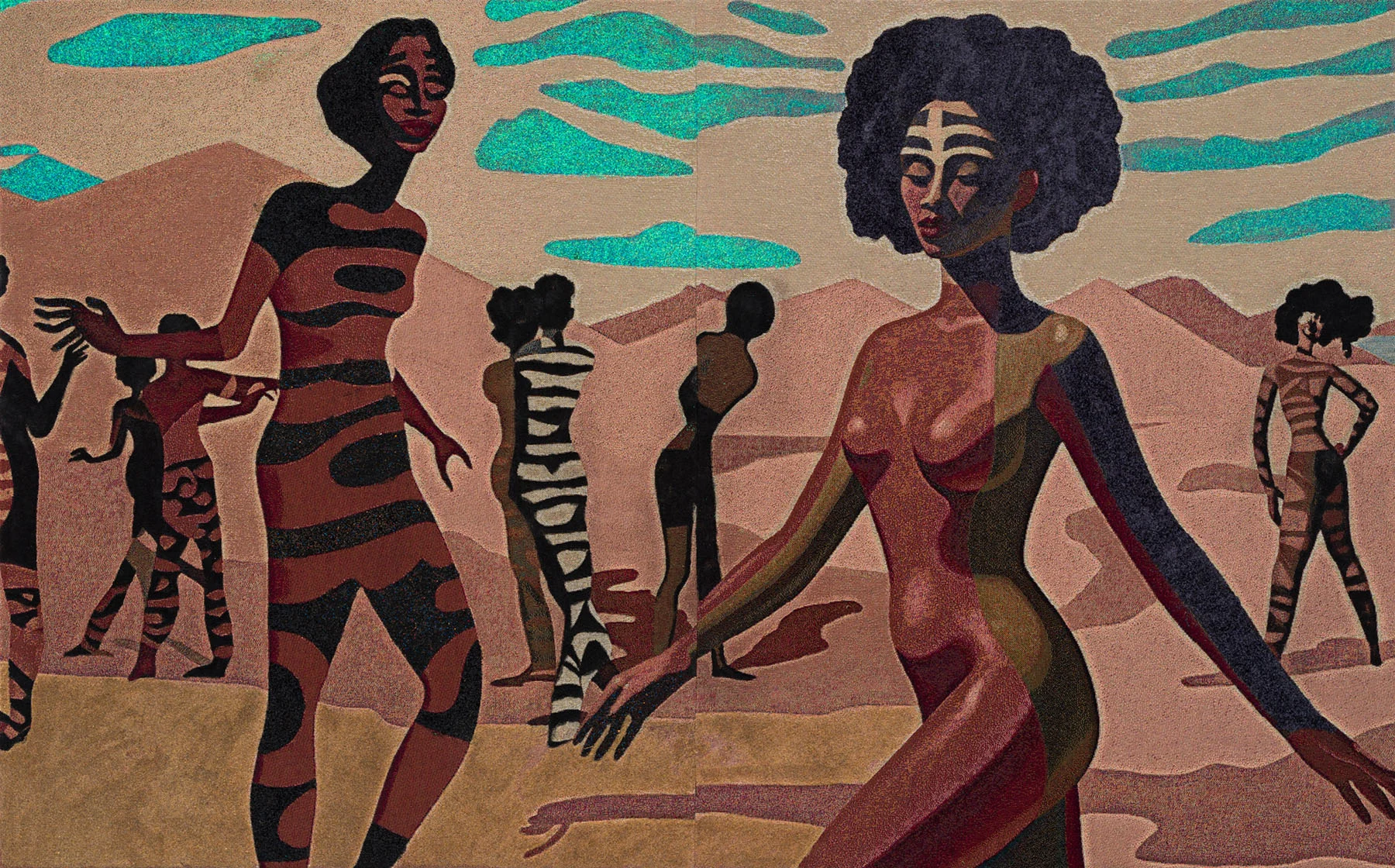
It’s hard to appreciate what Akea Brionne does through a screen. The bold colors and jacquard textures of her mixed-media works come through, but only at certain angles does it become clear that the tapestries aren’t flat, but stuffed with rags and polyfill, and stretched taut over canvases. She tells Allyssia Alleyne that even though the tapestries are often inspired by her own dreams, they are very much rooted in reality, and look to send a message about the way we are treating our planet.
Lithe women covered in animal stripes and abstract forms, or else donning gowns and jewels, dancing through sepia landscapes, sand dunes surrounded by pyramids, verdant valleys and beachfronts. Akea Brionne’s vivid tapestries are often inspired by her own dreams, but for all of their surreal elements, Brionne insists they’re rooted in reality, reflecting humanity’s complicated relationship with the world around us.
Brionne debuted her first tapestries as part of the Mississippi Museum of Art’s 2022 exhibition “A Movement in Every Direction: Legacies of the Great Migration.” Before then, the camera was Brionne’s primary tool. She pursued documentary projects that illuminated the relationship between Black identity, memory and movement through American social landscapes. For her portrait series “Black Picket Fences,” looking at Baltimore’s Black middle class, she was named Duke University’s 2018 Documentarian of Color.
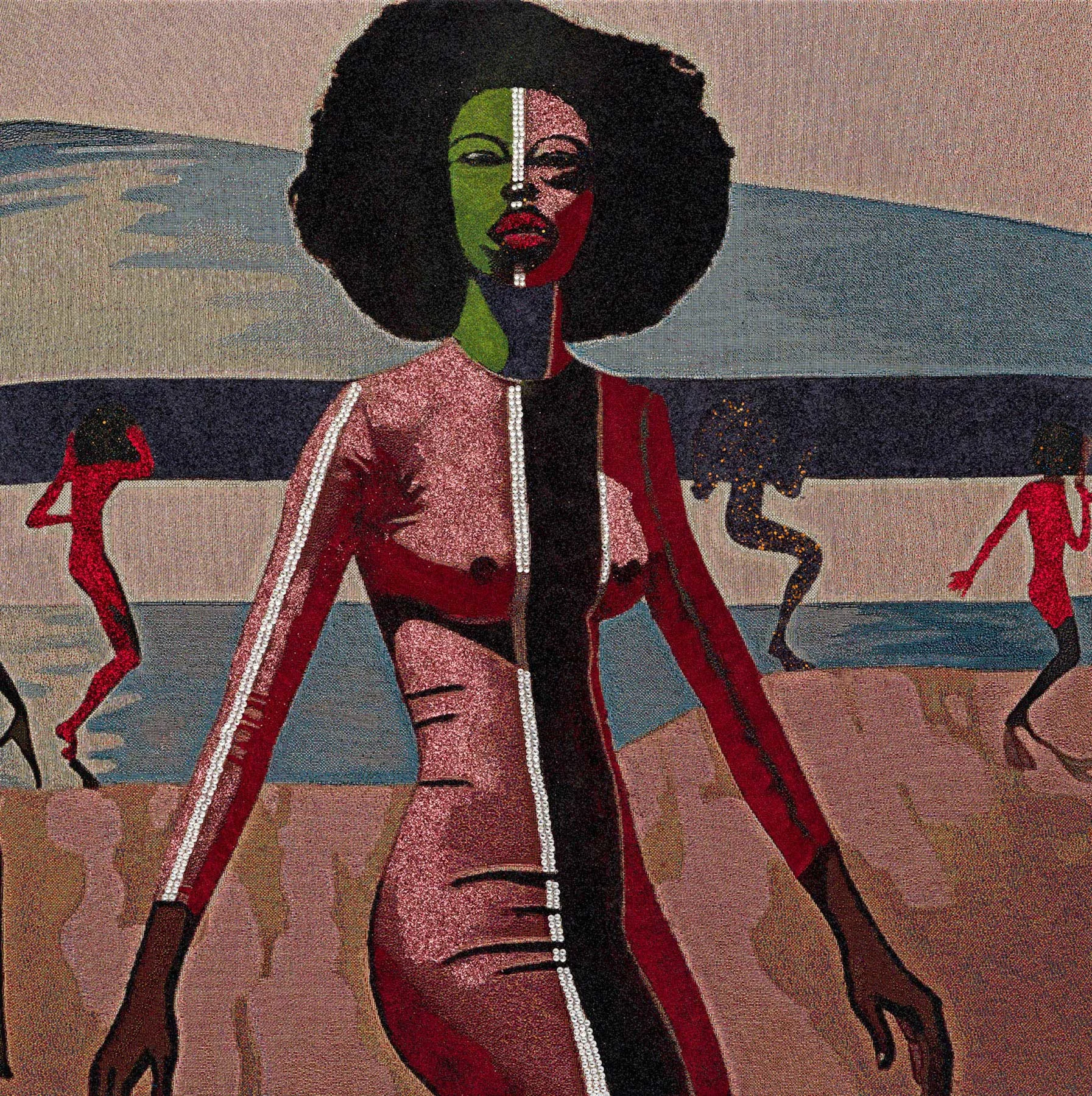
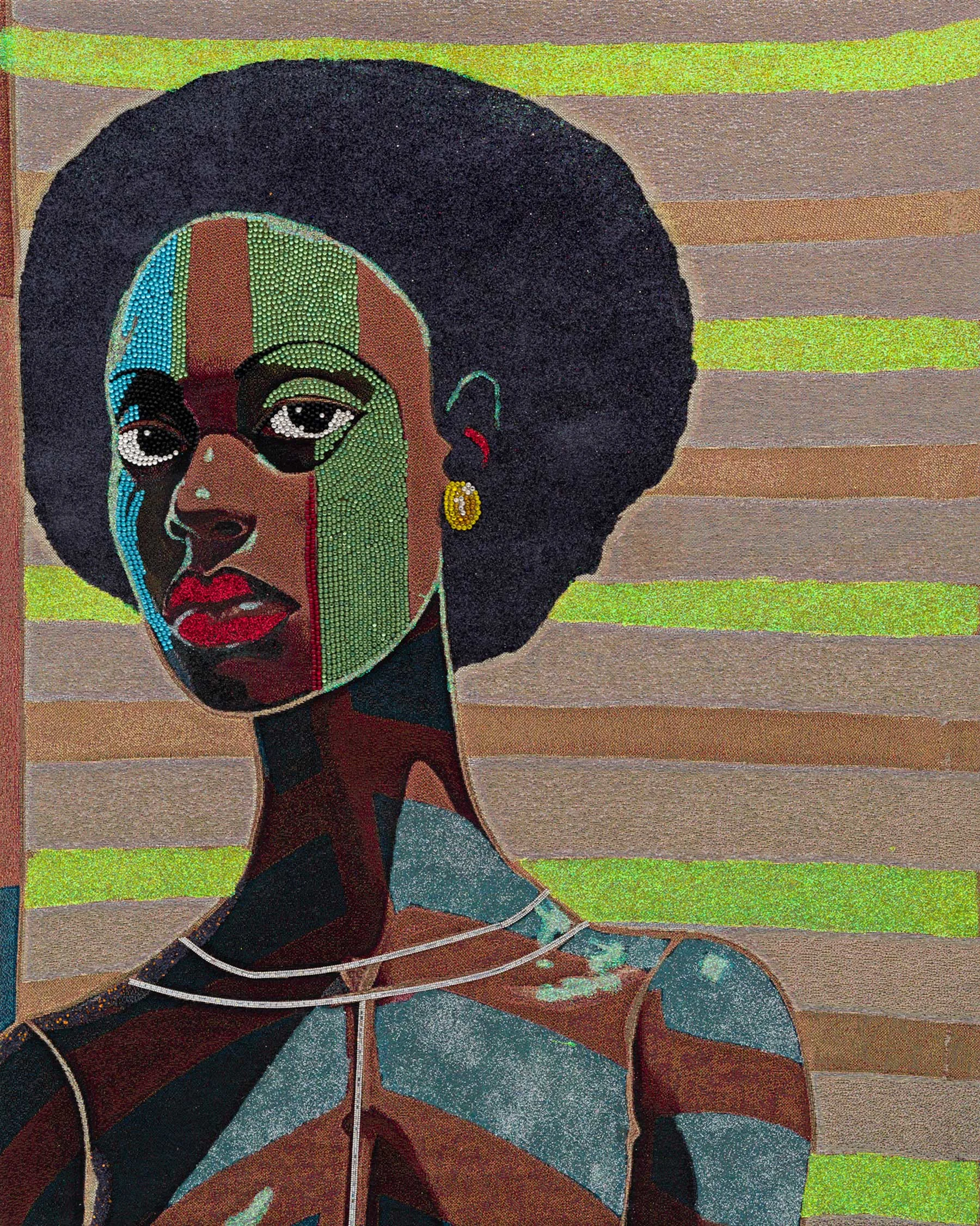
Speaking from her home in Detroit, Brionne traced her interest in documentary photography to her early experiences with displacement. Born in New Orleans, Louisiana, she saw her family uprooted and scattered in the wake of Hurricane Katrina when she was just eight years old. She herself has crisscrossed the country, living in Baltimore, the Bay Area, St. Louis and Detroit.
“I was initially drawn to the aspect of capturing history as it unfolded. But I now understand my dive into that world was a therapeutic process of understanding myself and the world,” she says. “I think I became obsessed with trying to make sense of myself during a time when nothing made sense to me, so I decided that a way of making sense of my confusion was to document it.”
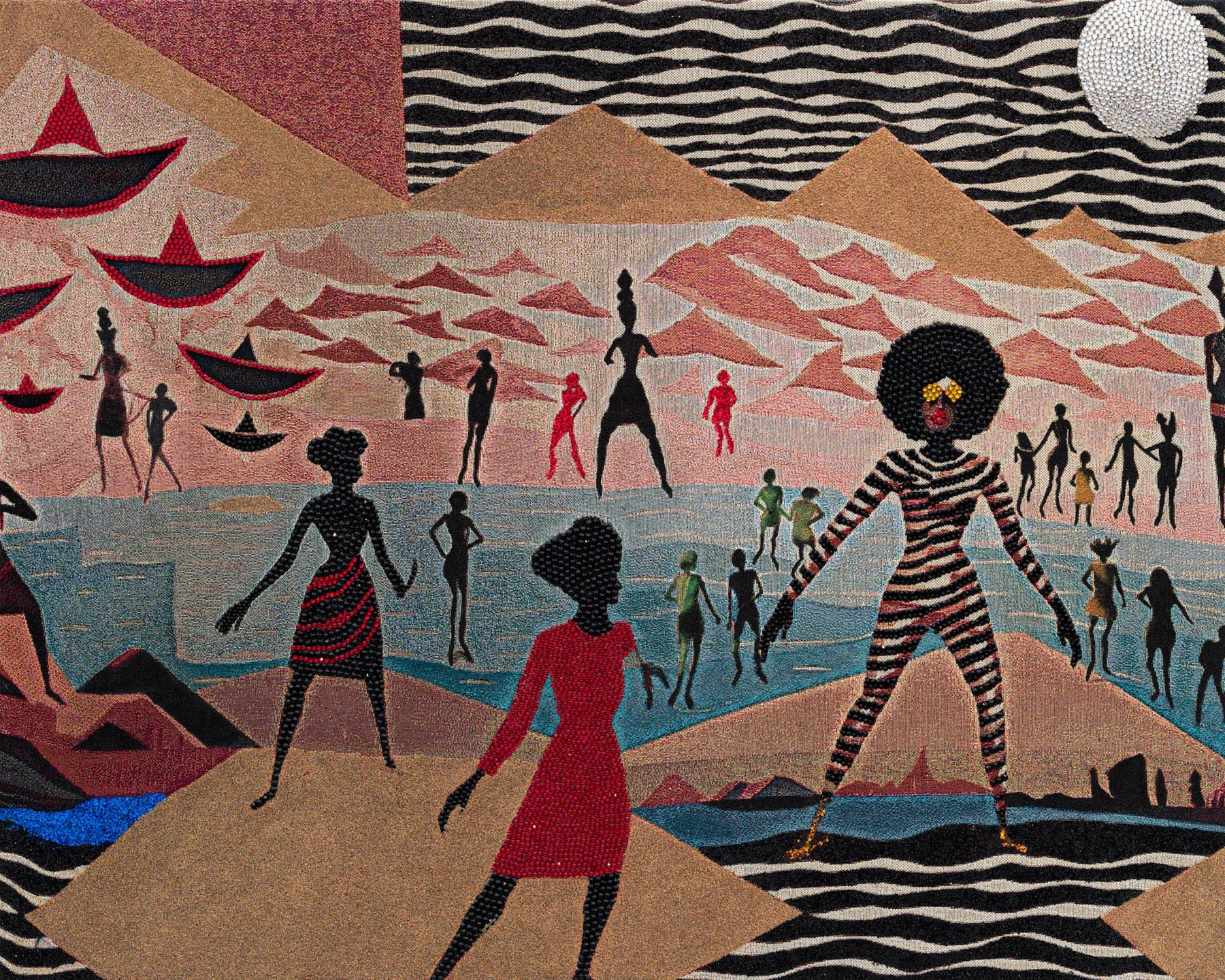
But at some point, photography began to feel insufficient. Its lack had less to do with the camera itself than with the viewer she hoped to reach. “The limits lie more so within audiences and their attention span and imagination, which I believe is severely impacted by our growing dependence on social media and online interfaces,” she says. By moving to tapestry, she hoped to “trick people into digesting a photograph without being conscious of it,” forcing them to engage with her work in a deeper way than they’d become accustomed to.
Besides, she’d been looking for an opportunity to bring her own hand into her work, and to incorporate fabric, “a material that was really seductive to me.” As a child, she had taken weekend sewing classes at a local senior center, crafting tote bags and clothing from collected fabrics, harboring dreams of a job in fashion.

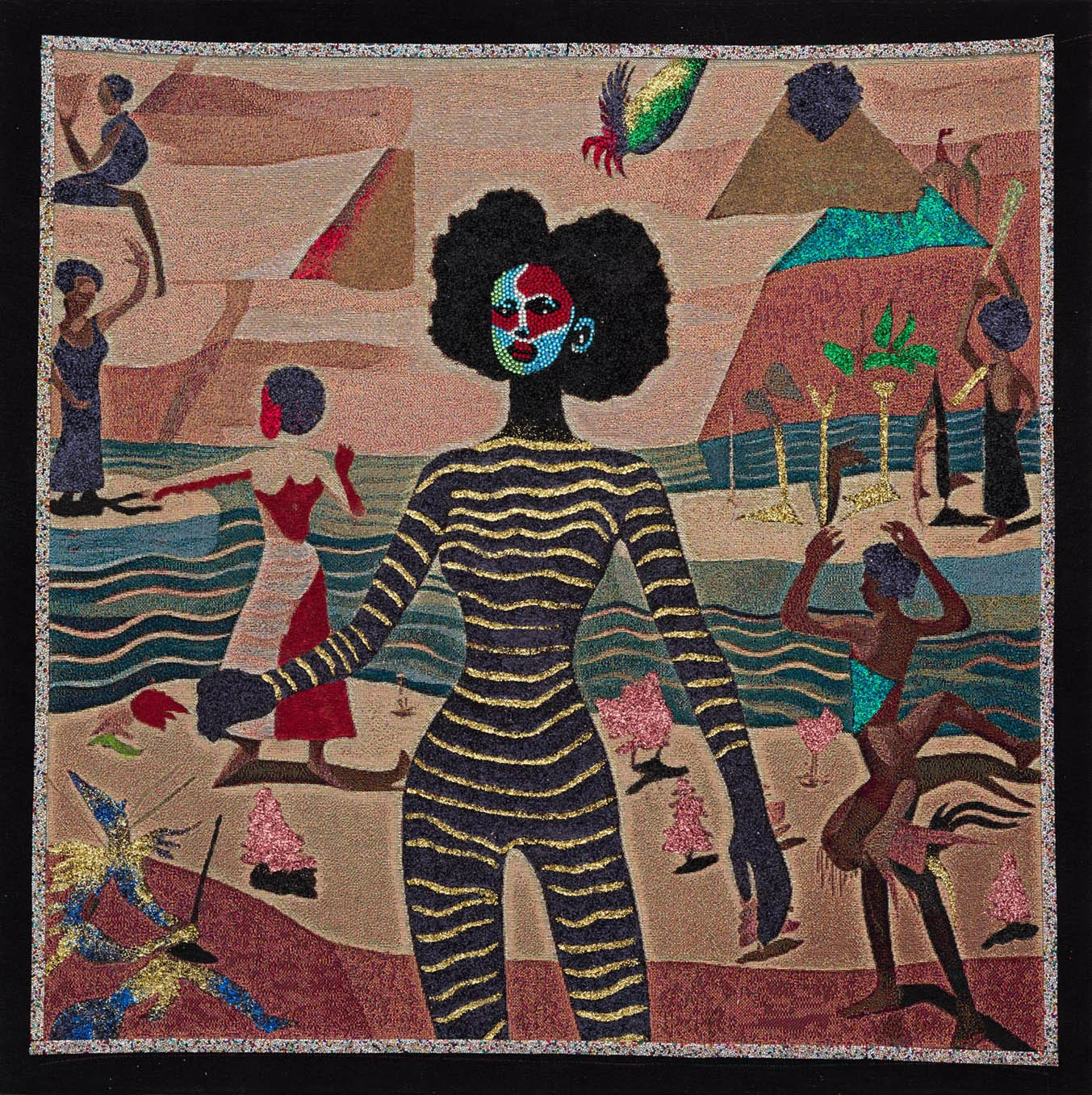
Brionne stresses, however, that her work is as lens and research-based as ever, though the process has changed considerably. To create a tapestry, she first layers self-portraits, family photos and appropriated imagery. Then, she feeds the collage into a private generative AI model she’s trained on her own work “so they look less like photographs and more like drawings or paintings.” After further tweaks in Adobe Photoshop and Lightroom, she sends the image off to be printed with a digital loom. She adds the embellishments herself.
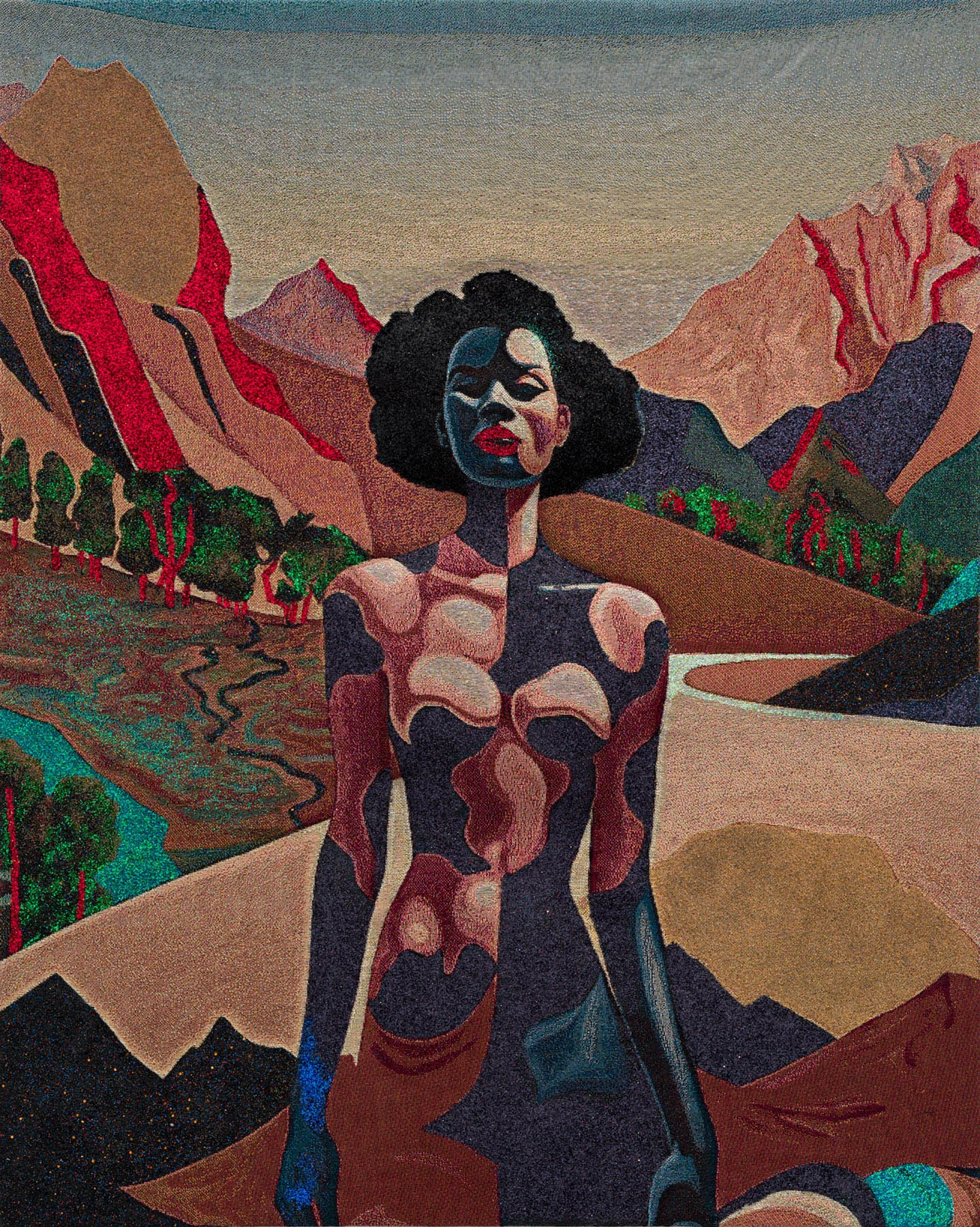
As she pivoted from film to fabric, Brionne shifted her focus too, moving away from the purely documentary to embrace the surreal. Though to her eye, the discrepancy is less stark than one might think. “I personally think I’m still working in a documentary lens. My work now is just focused on larger social commentary and patterns that I’m witnessing, especially with our relationship to landscape and the earth and how we’re treating it,” she says.
Through her recent scenes of figures in stunning natural landscapes, she seeks to capture the naïveté and foreboding of our moment. Like human beings going about their lives oblivious to the oncoming climate crisis, her figures celebrate “before their world begins to shift dramatically.” She’s seen it foreshadowed in the devastation of Hurricane Katrina, but also the wildfires of California, where she “woke up to orange skies,” and the severe flooding that hit Maryland in 2016 and 2018.
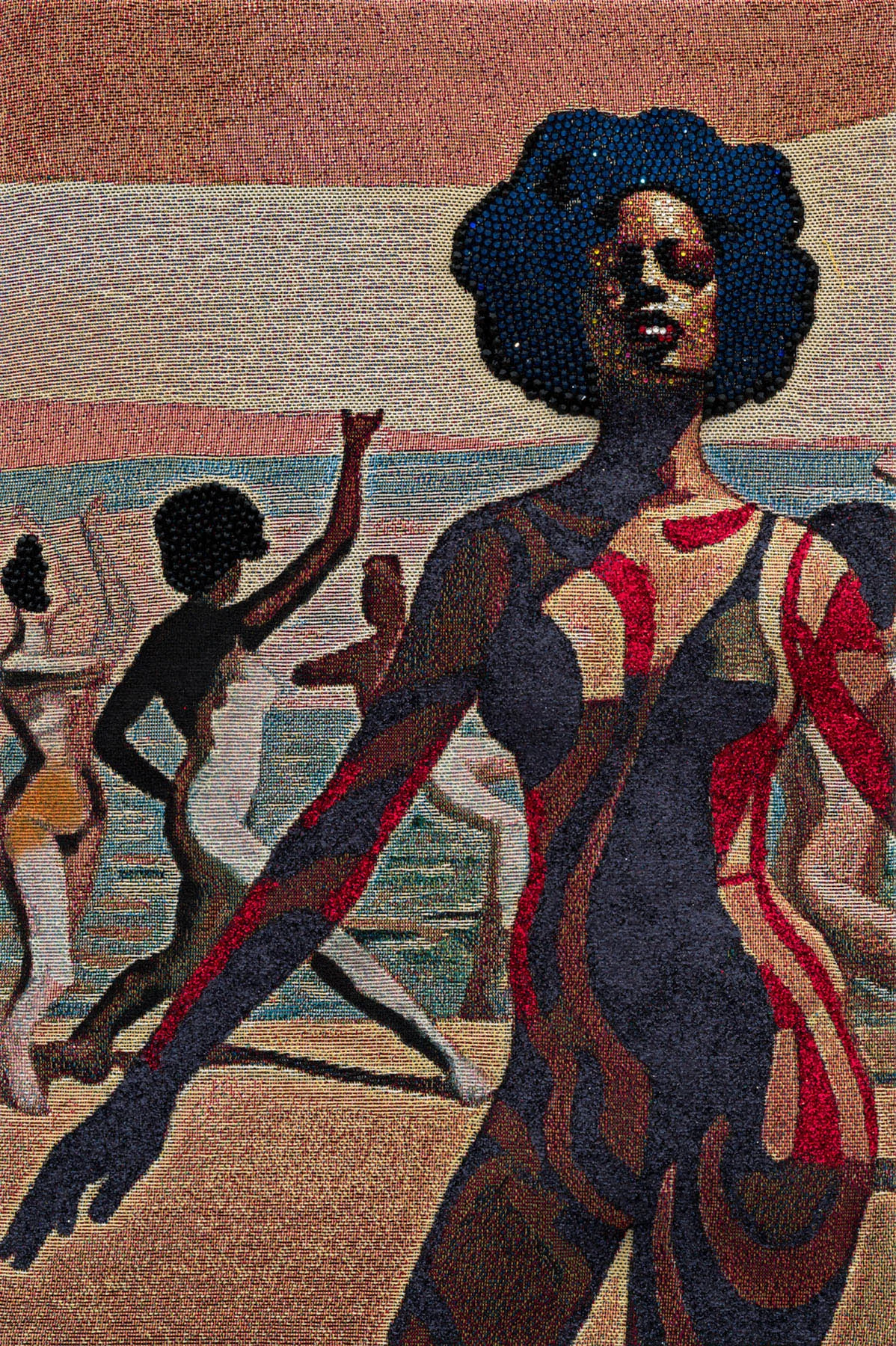
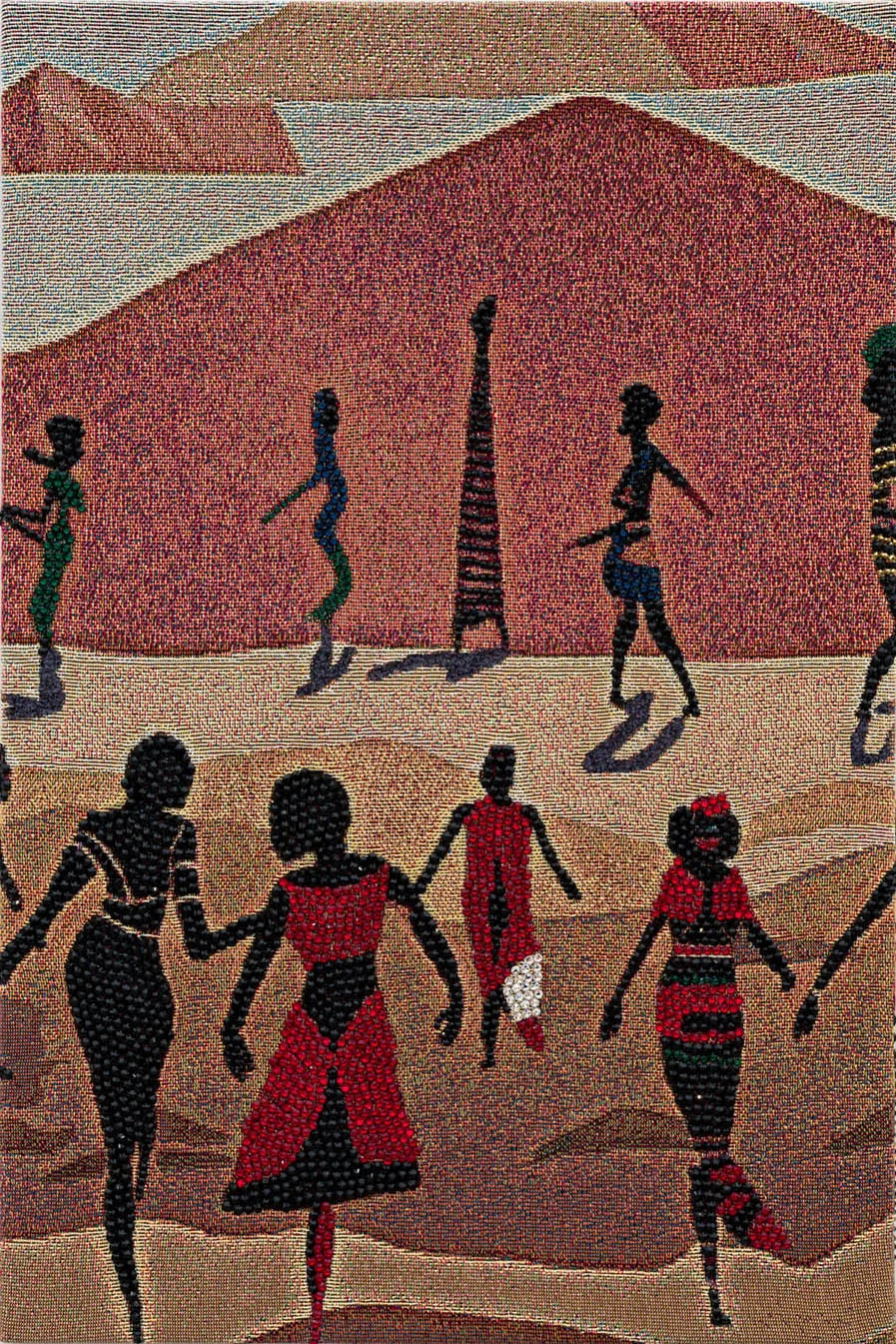
Such themes—the effects of the climate crisis, the destruction to come—can be hard to appreciate mid Instagram scroll. But Brionne hopes that by dealing in tapestry and symbols she can get the viewer to pause for a moment longer, and more fully engage with and reflect on the themes presented. “I think textiles bring tactility back to the conversation and demand an acknowledgment of time, materiality, and presence,” she says, “as long as the viewer is willing to participate in that investment.”
“A lot of symbols and motifs reference mythology and folklore creation stories, and allude to cycles of rebirth and transformation,” she says. “I believe that beyond just the environment, we will be forced to shift culturally, socially and spiritually over the next few decades, and my work alludes to a lot of what I believe our society is and will be going through.”

